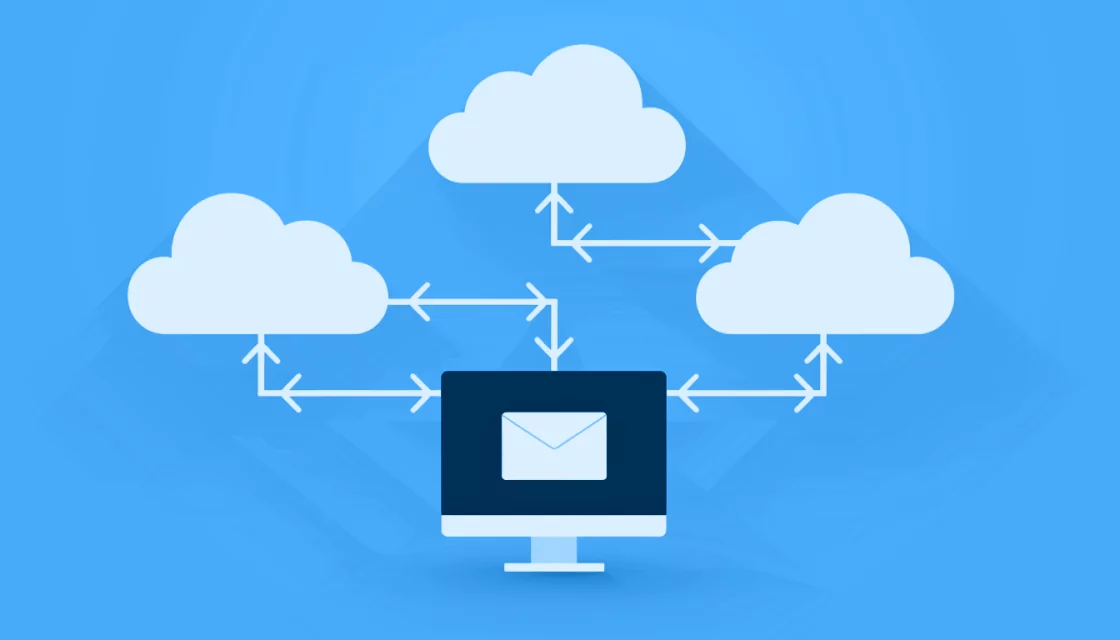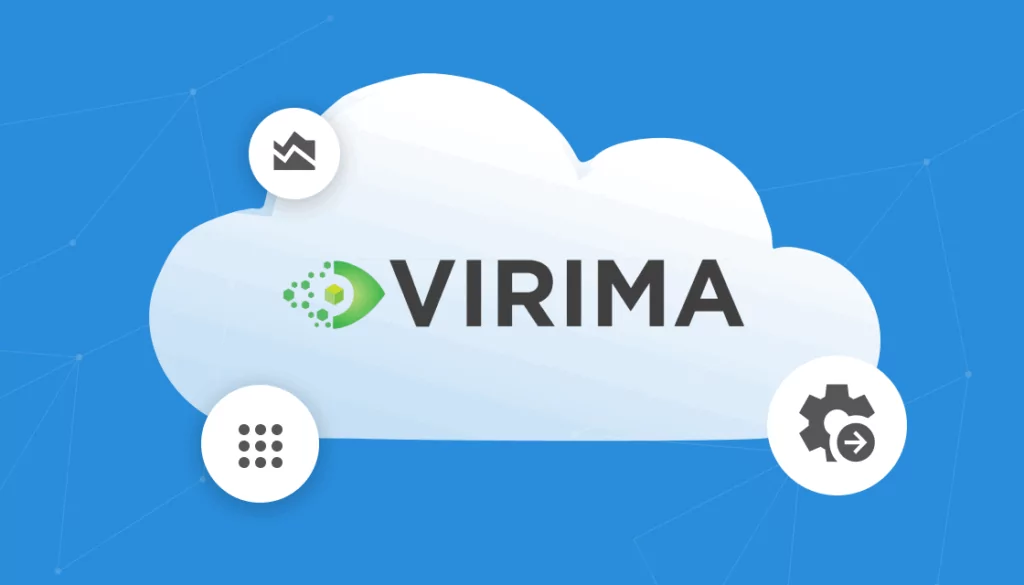What Is Active Directory (AD) Migration?
Active Directory (AD) migration involves transferring user accounts, groups, computers, and other directory objects from one AD environment to another. This process is essential when organizations merge, restructure, or upgrade their AD infrastructure. The goal is to ensure seamless access to resources and maintain security policies while minimizing disruption to users.
Key tasks in AD migration include planning the migration strategy, preparing the target environment, synchronizing data, and validating the migration to ensure all objects have been correctly transferred and are operational in the new environment. In a large organization, AD migration is a complex and risky process, because AD is a central component in enabling access to organizational resources.
This is part of a series of articles about application dependency mapping
Table of Contents
Toggle- What Is Active Directory (AD) Migration?
- What Are AD Consolidation and Restructuring?
- Why Is AD Migration Considered Complex and Risky?
- What Are Active Directory Migration Tools?
- Tips from the Expert
- Best Practices for a Successful Active Directory (AD) Migration
- Faddom for AD Server Migration
- Conclusion
What Are AD Consolidation and Restructuring?
AD consolidation and restructuring are processes used to simplify and optimize an organization’s directory services.
AD consolidation involves merging multiple AD domains or forests into a single, unified structure. Its primary purpose is to reduce complexity, improve manageability, and lower administrative overhead. It simplifies user management and enhances security by having a central point of control.
AD restructuring reorganizes the existing AD structure to better align with the current business needs and goals. Restructuring may involve modifying the organizational unit (OU) hierarchy, adjusting group policies, or moving objects between domains or OUs. The goal is to create a more efficient and logical AD design that supports the organization’s workflow and security requirements.
Why Is AD Migration Considered Complex and Risky?
Active Directory environments can contain thousands of objects, including user accounts, groups, and policies. It can be challenging to ensure that all directory objects and dependencies are accurately transferred and functional in the new environment. There is also a need to maintain uninterrupted access to critical resources and services during the migration, which can be difficult to achieve without causing disruption to end-users.
AD aids in managing access and security policies within an organization. During migration, ensuring that all security settings, permissions, and group policies are correctly transferred and applied in the new environment is critical. Any lapses in this process or security configurations can lead to vulnerabilities, unauthorized access, and compliance issues.
Another factor adding to the complexity of AD is its deep integration with other IT systems and applications within an organization. Migrating AD requires careful planning and coordination to avoid breaking these integrations. Security policies, permissions, and configurations must be preserved during the migration.
What Are Active Directory Migration Tools?
Active Directory migration tools are specialized software solutions that enable the process of migrating AD objects between environments. These tools help automate and simplify various aspects of the migration, reducing the risk of errors and minimizing downtime.
Here are some key features provided by AD migration tools:
- Automated object migration: Automatically transfers user accounts, groups, computers, and other AD objects from the source to the target environment. This automation reduces the manual effort required and ensures consistency and accuracy during the migration.
- Data synchronization: Migration tools often include features for synchronizing data between the old and new environments. This ensures that changes made in the source environment during the migration process are reflected in the target environment, maintaining up-to-date information.
- Pre-migration analysis: Before performing the migration, these tools can analyze the source environment to identify potential issues and dependencies. This helps in planning the migration strategy and addressing any challenges beforehand, ensuring a smoother migration process.
- Security and permissions management: Helps preserve access controls, group memberships, and other security-related configurations, ensuring that users have the same level of access in the new environment as they did in the old one.
- Rollback and recovery options: Provide the ability to revert to the previous state if necessary, minimizing disruption to the organization.
- Reporting and auditing: Comprehensive reporting features allow administrators to track the progress of the migration and ensure all objects are correctly migrated. Auditing capabilities provide insights into changes made during the migration process, supporting compliance and troubleshooting efforts.
- Integration with other systems: Some AD migration tools integrate with other IT systems and applications, enabling a more thorough and coordinated migration strategy. This ensures that all dependencies and integrations are considered and managed during the migration.
Related content: Read our guide to active directory migration tool

Lanir specializes in founding new tech companies for Enterprise Software: Assemble and nurture a great team, Early stage funding to growth late stage, One design partner to hundreds of enterprise customers, MVP to Enterprise grade product, Low level kernel engineering to AI/ML and BigData, One advisory board to a long list of shareholders and board members of the worlds largest VCs
Tips from the Expert
In my experience, here are tips that can help you better manage Active Directory (AD) migrations:
-
Establish domain or forest trusts for phased migrations
Phased migrations with temporary trusts reduce downtime by allowing users to access both old and new environments during the transition.
-
Preserve SID history to avoid permission issues
Retaining users’ old SIDs ensures continued access to resources like file shares and applications without needing to reconfigure permissions.
-
Automate post-migration validation checks
Use scripts to quickly verify logins, group memberships, and permissions, ensuring nothing breaks without waiting for user-reported issues.
-
Monitor AD replication closely after migration
Watch for replication delays or errors to prevent inconsistent data, authentication failures, and access disruptions in multi-site setups.
-
Address dependencies beyond AD objects
Ensure all integrated applications and scripts are aligned with the new AD setup to avoid unexpected service interruptions.
Best Practices for a Successful Active Directory (AD) Migration
When planning an Active Directory migration, organizations should consider the following best practices.
1. Develop a Detailed Migration Plan
The migration plan should outline the entire migration process, including timelines, resources required, and roles and responsibilities of the migration team. It should include an inventory of all AD objects to be migrated and dependencies between different systems and services.
Additionally, the plan should detail the communication strategy for informing stakeholders and end-users about the migration process and any expected downtime or changes in access. A well-documented plan ensures all stakeholders are aligned, encourages coordination among different teams, and helps in managing expectations throughout the migration.
2. Map All Your AD Servers
Begin by creating a comprehensive inventory of all Active Directory servers within the environment. This includes domain controllers, global catalog servers, and any other servers that interact with AD. Document their roles, locations, and the services they provide. Understanding the current AD topology is crucial for planning the migration and ensuring no critical components are overlooked.
Next, assess the health and performance of each server. Use diagnostic tools to check for replication issues, service disruptions, and any potential conflicts. Addressing these issues before migration helps prevent complications during the transition and ensures a smoother, more efficient migration process.
Faddom for AD Server Migration
When migrating an AD server, it is important to see which components have already migrated and which may still be using the old AD server. This can prevent outages when shutting down the old server. This is where Faddom comes in: map all your servers in less than 60 minutes
Faddom is agentless and doesn’t require credentialsIt is cheap, starting at $10K/yearMap the entire environment in real-time, updating 24/7Quick: One person can map the entire organization in an hour
Learn more about Faddom for data center migration!
3. Consider Domain Design
Review and plan the domain design of the target environment to ensure it meets current and future organizational needs. This involves deciding on the domain and forest structure, DNS namespace, and trust relationships. Consider the organization’s geographical distribution, administrative boundaries, and future growth when designing the domain structure.
A well-thought-out domain design should simplify management tasks, enhance security, and provide scalability. For example, consolidating multiple domains into a single domain can reduce administrative overhead, while creating separate domains for different business units might improve security and autonomy. Ensure that the DNS infrastructure is properly configured to support the new domain design.
4. Focus on AD Security
Evaluate the current security policies and configurations, and ensure they are appropriately applied in the new environment. This includes maintaining user permissions, group memberships, and access controls. Conduct a thorough security assessment to identify potential vulnerabilities and address them before the migration.
Consider implementing security measures such as multi-factor authentication, conditional access policies, and advanced threat protection. Ensure that all security settings, including password policies, account lockout policies, and auditing configurations, are consistently transferred to the new environment. Document all security configurations and review them after the migration.
5. Create a Test Environment
Establishing a test environment that mirrors the production environment is essential for a successful migration. This allows for testing the migration process, identifying potential issues, and validating the migration plan without impacting the live environment. Use the test environment to perform pilot migrations of a small subset of users and groups to verify the migration process.
Simulate different scenarios, such as failover and disaster recovery, to ensure the new environment can handle unexpected events. Testing also provides an opportunity to refine the migration scripts and tools, ensuring they work as expected. Regularly update the test environment to reflect changes in the production environment.
6. Migrate Users, Groups, and Profiles
Begin the actual migration by transferring user accounts, groups, and profiles from the source to the target environment. Use migration tools to automate this process and ensure accuracy. Pay special attention to user data, including home directories and profile settings, to ensure a seamless transition for end-users.
Verify that all user attributes, such as email addresses, phone numbers, and department information, are correctly transferred. Ensure that group memberships and nested groups are accurately replicated in the new environment. Conduct post-migration checks to confirm that users can log in and access resources as expected.
7. Implement Authentication Protocols
Review and configure authentication protocols to ensure compatibility and security in the new environment. This includes validating the use of Kerberos, NTLM, or other authentication mechanisms. Ensure that all applications and services relying on AD authentication are correctly configured to work with the new setup.
Test the authentication process for different user scenarios, including remote access and single sign-on (SSO), to ensure a seamless experience. Document any changes to the authentication protocols and provide training to IT staff to manage and troubleshoot authentication issues in the new environment.
8. Enable Password Synchronization
Implement password synchronization between the source and target environments to maintain user authentication continuity. This ensures users can access resources in the new environment without needing to reset their passwords. Password synchronization tools can help automate this process, reducing the risk of user disruption.
Verify that the synchronization process is secure and that password data is protected during transit. Test the synchronization process with a small group of users before rolling it out organization-wide. Provide clear communication to end-users about any changes to the password policies and support them in case of any issues during the transition.
9. Migrate Resources and Applications
In addition to AD objects, migrate associated resources and applications, such as file servers, databases, and line-of-business applications. Ensure these resources are properly integrated with the new AD environment. Test all critical applications to confirm they function correctly post-migration. Keep an inventory of all resources and applications, including their dependencies and configuration settings.
Coordinate with application owners to plan the migration and ensure minimal disruption to business operations. Conduct thorough testing and validation to ensure that all applications and services are fully operational in the new environment. Provide training and documentation to IT staff to ensure they can manage and support the migrated resources.
10. Test and Validate
After migration, perform thorough testing and validation to ensure all objects, permissions, and applications are functioning as expected. Conduct user acceptance testing to gather feedback and address any issues. Validate that security policies and compliance requirements are met in the new environment.
Use automated testing tools to perform regression testing and ensure that existing functionality is not impacted by the migration. Monitor system performance and resource utilization to identify and address potential bottlenecks. Document the testing and validation process, including any issues encountered and their resolutions, to provide a clear record of the migration’s success.
11. Implement Continuous Monitoring
Post-migration, establish continuous monitoring to ensure the health and performance of the new AD environment. Monitor key metrics, such as replication status, authentication requests, and security events, to proactively identify and resolve issues. Regular audits and reviews can help maintain the integrity and security of the AD infrastructure.
Implement automated monitoring tools to provide real-time alerts and insights into the environment’s performance. Conduct periodic health checks and vulnerability assessments to identify and address potential risks. Provide regular reports to stakeholders on the status and performance of the AD environment, ensuring transparency and accountability in maintaining the new setup.
Conclusion
Active Directory migration is a multifaceted process requiring meticulous planning, thorough testing, and effective execution strategies. By following best practices such as detailed planning, careful mapping of servers, and rigorous testing, organizations can mitigate risks and ensure a seamless transition. Continuous monitoring post-migration helps maintain the stability and security of the new environment, supporting the organization’s operational needs.
Learn more about Faddom for data center migration or start a free trial by filling out the form on the sidebar!








